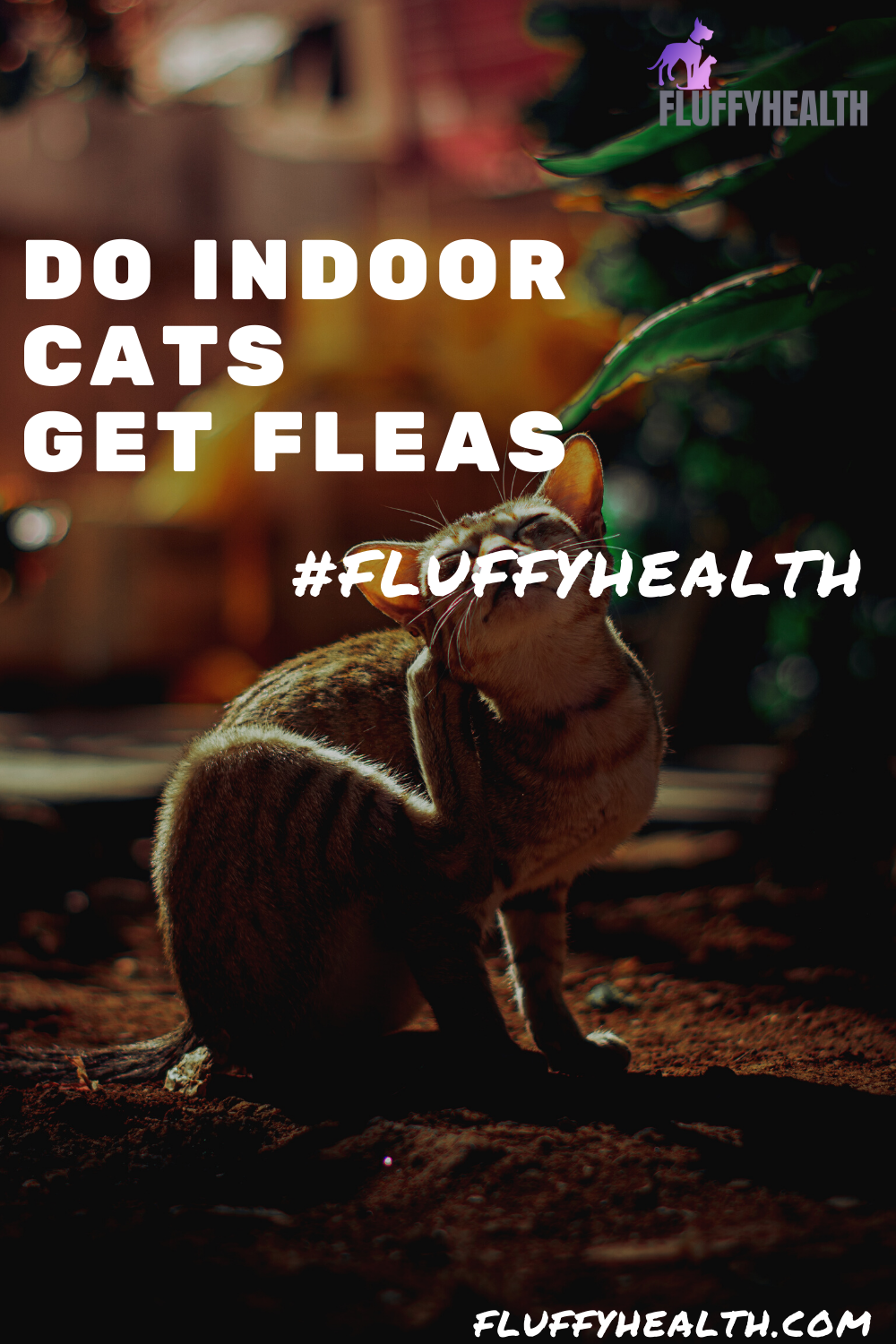Do indoor cats get fleas? It’s a question we often get asked. For fleas, your indoor cat is easy prey. Just because they aren’t frolicking in nature doesn’t mean your cat won’t get fleas.
Indeed, these parasites are remarkably adapted to our interiors. It is even there where we live most of the time. Many people think otherwise and do not use any preventative treatment for fleas. Yet cats can get fleas even when they never leave the house.
Well, in this article, we answer the famous question, do indoor cats get fleas?
How Do Fleas Get Inside?
Fleas can arise from any animal that has access to the outside and brings fleas inside, for example, a dog, another cat that goes outside, etc.
If you don’t have a cat that goes outside, then think carefully. You are the one that comes in and out and can bring fleas inside! And you can easily carry these fleas, at any stage of their development, adult, larva, egg on your pants, or under your shoe. Also, adult fleas are attracted to heat, so they won’t hesitate to jump on you if you walk nearby.
Likewise, fleas are incredible travelers and can jump up to 100 times their eight! It is easily possible for a flea to find its way inside a house like mosquitoes that still manage to enter your bedroom after having entirely barricaded it for the night.

Do Indoor Cats Get Fleas?
Yes! If you are not careful about house hygiene and furniture, then your house can be infested by fleas that affect your cat. Nonetheless, you can find fleas in these five areas in your home or areas you visit where fleas can get to your indoor cat.
#1 Windows Or Wild Animals
Let’s be clear; mosquito nets do not protect against fleas. Fleas are so small that they can easily pass through the screen and land on the cat, mainly if the window is at the ground level or the basement, if long grasses or bushes surround it, or if there is a risk that other wildlife, such as mice, rats, and rabbits, will roam around leaving a trail of flea eggs behind. This happens more often than you think.
Fleas cannot fly, but they can hop up to 18cm high and 33cm away. Adult cat fleas locate their host using visual and thermal cues. They jump on your cat and quickly burrow into the hair and skin to feed on the blood. The chip’s body is small and flat, which helps it glide effortlessly between the coats to reach the skin.
Once the flea touches the skin, it stays there, moving between the hairs like a cat might in a forest: easily and well hidden. If your cat has a dark coat, it will be tough for you to spot a flea.
#2 Your Veterinarian
A simple visit to the vet or groomer may be enough to infest your cat with fleas and/or ticks. Indeed, the veterinary clinic is a place of passage where many different animals come together, some of which have access to the outside.
Therefore, it is essential to keep your cat’s transport crate on your lap at the vet and especially not put it on the ground.
#3 Walk Near An Open Door
Every time you open the door, a flea can slip into your cozy nest. Fleas hop through open doors when they sense body heat, vibration, and breath. Once a flea is inside, it finds a host to feed on. If your indoor cat isn’t protected from fleas, there’s a good chance the flea will attack him.

#4 Interact With Other Pets Or Animals
Whether they live in your place or visit you occasionally, they can introduce fleas into your home. As soon as another flea-carrying animal enters your space, fleas start to infest your living areas.
The life cycle of the chips is continuous. Twenty-four hours after an adult flea has consumed a blood meal, it begins to lay up to 50 eggs per day. This is the life cycle of all-female adult flea passes through.
So it is never a case of a single flea consuming a meal and laying eggs on an animal, but multiple fleas consume meals and lay eggs. The eggs are sticky at first, but they dry up and roll over the fur and hairs and land, all over the place.
Imagine a dog with fleas walking into your house and playing a little chase game with your cat: wherever the dog runs, the eggs fall. Once the tiny eggs land on the ground, they fall into the carpet and crevices, where they stay for up to ten days.
Then they hatch into tiny larvae that burrow even deeper into carpets, furniture, and bedding as they seek to consume the dirt from the fleas, which are flea droppings.
Soon they weave a cocoon and enter the nymph stage. They are very resistant to any treatment in this cocoon and can thus wait months, even years, before waking up!
Once they have hatched as adult flea, the process of hopping on a host and consuming the first meal so they can lay eggs begins again. Of course, this is just the one-chip cycle. Eventually, it becomes the cycle of hundreds of chips. This is why fleas are a problem when they enter your home.
#5 Lying Near Or In Your Pile Of Laundry
Muddy pants you tossed in the laundry pile or socks from last night’s soccer game piled on the bedroom floor may contain fleas. Fleas look like little clumps of dirt, which means your pile of laundry is the perfect cover-up.
If you suspect your cat has fleas, seek advice from your veterinarian and begin the process of removing fleas in all their forms (larvae, eggs, and pupae) from your house. The process can take up to 3 months.
Rest assured, the situation is not hopeless. By talking with your veterinarian, you will find the solution to protect your cat and your house before the first flea enters your home because it is the only way to prevent the life cycle to begin.

Do Indoor Cats Get Fleas? Final Thoughts
We hope you get the answer to your question.” Do indoor cats get fleas?” Although cat owners take care of their cat’s hygiene and cleaning their homes more often, fleas can still infest the house through outside causes such as bringing it from your veterinarian or when your cat plays with feral animals outside.
Nonetheless, doing your best to avoid and prevent this problem is what you can and should protect your cat from fleas. Also, remember to visit your vet immediately if you notice any sign of sickness or fleas infestation. Also, you can always use natural remedies for pets against fleas.

